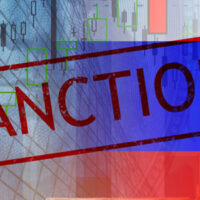
During the keynote address at the 2019 ACAMS Annual International AML & Financial Crime Conference―Caribbean, the executive director of the Caribbean Financial Action Task Force (CFATF) spoke about the challenges her staff faced when using credit cards to book a hotel while on work-related travel to Europe. CFATF’s secretariat is based in Trinidad and Tobago, which continues to be on the EU’s anti-money laundering (AML) list of high-risk countries with strategic deficiencies in AML and counter-terrorist financing (CTF). Each iteration of this list has led to a tidal wave of protests and sparked vigorous debates among the Financial Action Task Force’s (FATF) global community. Countries added to the list complain of a unilateral, arbitrary and nontransparent process2, with one well-respected economist even labelling the EU’s approach as racist.3
Granted the well-established linkages between FATF’s ‘greylist’4 and the EU’s AML list, this article analyses whether the EU’s regime reinforces the FATF system or instead undermines it.
The EU’s AML List and the FATF’s Greylist
The EU’s AML list, in all of its publications, has relied heavily on FATF’s greylist. Adopted in May 2020, the EU’s new methodology for identifying high-risk countries (the 2020 Methodology) effectively states that when a country is placed on FATF’s greylist, it is assumed to present a risk to the global financial system and is therefore presumed to represent a risk to the EU internal market.5 However, this is a major sore point. Unlike the blacklist, which identifies those high-risk jurisdictions singled out for countermeasures, the greylist identifies countries that are cooperating with the FATF to implement an action plan for addressing their strategic AML deficiencies. However, the EU’s process does not adequately consider the commitment and progress made by these jurisdictions, thus failing to distinguish them from countries that pose a true threat to the global financial system.
The EU and its member states may argue that they are well within their sovereign right to take whatever measures they deem necessary to protect their financial system from money laundering and terrorist financing risks. FATF Recommendation 19 on higher-risk countries actually requires countries to be able to apply countermeasures proportionate to risks, independent of any call from the FATF.6 However, the proportionality of the approach has to be questioned as the EU seems to have grossly exceeded the precautions called for by the FATF. The EU’s countermeasures can range from requiring EU financial institutions (FIs) to apply enhanced due diligence to transactions involving designated countries, to prohibiting EU FIs from establishing branches in those countries.7 The impact on these member states ranges from de-risking individual citizens and respondent banks, to curtailing foreign direct investment in their national economies, which can be catastrophic.
In the FATF We Trust?
The FATF has previously stepped in to ensure proportionality in applying its standards. In October 2016, the FATF radically overhauled Recommendation 8, not-for-profit organizations (NPOs) to address the imposition of AML regulations on NPOs, which were disproportionate to terrorist financing risks. Many FIs found it much simpler to de-risk NPOs, hampering the good work of these institutions. It remains to be seen whether the FATF will take a similar approach in ensuring that ‘proportionate’ is not interpreted as a country having minimum controls while turning a blind eye on those countries applying measures that are too harsh and not commensurate with identifiable risks. Failing to do so may undermine the decades of good work the FATF has done, as the de-risking that flows from such a heavy-handed approach pushes people toward the unregulated financial sector.
The 2020 Methodology also undermines the efficacy of the entire FATF system as it second-guesses the FATF at every milestone of the mutual evaluation and the International Co-operation Review Group (ICRG)8 processes. While the 2020 Methodology repeats ad nauseam that it aims to support the FATF’s efforts, hidden within its pages it states the following:
- The European Commission will double-check the work of the FATF in adding a country to,9 or omitting it from10 the greylist.
- The European Commission will, as far as possible, participate in developing FATF action plans for countries being added to the greylist. However, if the European Commission is not satisfied with the final approved action plan, the EU will develop its own benchmarks to ‘top up’ the FATF’s action plan.11
- In some cases, the European Commission will conduct its own assessment even before the FATF’s ICRG observation period12 is completed.
- Even though being placed on the greylist inevitably results in being added to the EU AML list, being removed from the greylist does not necessarily have a corresponding effect.
- Countries that have not been prioritised13 by the FATF for ICRG review may still be placed on the EU AML list.14
- When drafting EU benchmarks, the European Commission will determine whether the priority and recommended actions in the FATF’s approved mutual evaluation reports (MERs) cover all the European Commission’s concerns. Should there be a failing, the European Commission may ‘top up’ these requirements.15
Sovereignty vs. the Common Good
There can be no argument against the EU for relying on criteria that does not automatically qualify a country to be added to the FATF greylist but would pose a specific risk to the EU’s financial system. For example, the 2020 Methodology prioritizes the availability of accurate and timely beneficial ownership information to competent authorities.16 In contrast, the corresponding FATF technical compliance and effectiveness standards17 are not listed among the entry criteria for the greylist.18 However, the 2020 Methodology indicates that beyond giving heavier weight and focus to beneficial ownership information—than “other international organizations active in the field of AML/CFT19” would—the European Commission will independently assess the robustness of the country’s beneficial ownership regime against international best practices.20 Therefore, this goes beyond unilaterally assessing compliance with the FATF’s standards and substitutes the EU’s own benchmarks for the FATF’s. Either of these options has the potential to undermine the entire mutual evaluation process but both are unnecessary. The EU is well-positioned to influence the final contents of any MER significantly or catalyse revisions to the FATF’s beneficial ownership standards, as 14 of its member countries and the European Commission itself collectively comprise almost 40% of the FATF’s membership. Ironically, the EU’s own definition of beneficial ownership includes a threshold of just over 25%.21
In enforcing the FATF’s standards, MERs and follow-up reports as well as entering and exiting the greylist all involve multiple peer countries. These countries can participate through assessors, reviewers or experts; through FATF or FATF-Style Regional Body subcommittee and plenary discussions; and ultimately through a robust quality and consistency review open to all 202 members of the FATF’s global community.2 Most importantly, the assessed country is given the opportunity to be heard, adding to the equity of the process. Under the 2020 Methodology, the EU is judge, jury and executioner. However, it seems that both the assessed country and the FATF may have their heads on the chopping block.
Andrew Dalip, Jr., LLB (Hons.), LEC., MSc. (Dist.), CAMS, CGSS, Attorney-at-Law & Consultant, Trinidad & Tobago, maeson.chambers.law@gmail.com
- The Caribbean Financial Action Task Force (CFATF) was the first of nine FATF-Styled Regional Bodies (FSRBs) to be established. While the FATF’s membership comprises 37 countries and two supra-national bodies, the remaining 163 members of the FATF global community are divided among the nine FSRBs which are responsible for promoting the effective implementation and compliance with the FATF Recommendations, including through coordinating the undertaking of mutual evaluations of their member countries.
- Michael Nurse, “OACPS Condemns new EU Blacklist,” CARICOM Today, 7 May 2020, https://today.caricom.org/2020/05/08/oacps-condemns-new-eu-black-list/
- Marla Dukharan, “The EU is weaponizing money laundering and tax rules,” The Financial Times, 26 August 2020, https://www.ft.com/content/a9f8ad3e-55f6-42c2-8bda-b08bae5adb37
- The FATF publishes the following two lists of countries with deficiencies in their AML/CTF systems: (1) High-Risk Jurisdictions Subject to a Call for Action, aka the blacklist, which includes the most egregious cases. The FATF calls upon members to, at a minimum, apply enhanced due diligence, and in the most serious cases calls for countries to apply countermeasures; (2) Jurisdictions Under Increased Monitoring, aka the greylist, which includes countries working closely with the FATF to address deficiencies is their AML/CTF regimes. The FATF does not call for any countermeasures against countries on the greylist.
- See the 2020 Methodology, para. 3.1.1.
- “Methodology for Assessing Technical Compliance with the FATF Recommendations and the Effectiveness of AML/CFT Systems,” Financial Action Task Force, October 2019, https://www.fatf-gafi.org/publications/mutualevaluations/documents/fatf-methodology.html
- See Article 18a of the Fourth AML Directive (Directive (EU) 2015/849), which amended the Fifth AML Directive (Directive EU 2018/843)
- The FATF International Co-operation Review Group
- See the 2020 Methodology, para 3.1.1 which provides that in conducting its autonomous assessment, the European Commission will seek to confirm the FATF’s assessment and may take into account other sources of information including consultation of EGMLTF.
- See the 2020 Methodology, para 3.1.3, which provides that where at the end of the observation period the FATF does not greylist the country, the European Union’s autonomous assessment will apply.
- See the 2020 Methodology, para 3.1.2
- The observation period runs for a minimum of 12 months after the country’s mutual evaluation report (MER) is approved by FATF. If the country can unilaterally address the most strategic deficiencies outlined in the MER within this time, then the FATF will not add it to the greylist.
- Countries must generally satisfy 2 criteria to be placed on the greylist: (1) specific deficiencies in technical compliance and effectiveness as identified in the MER; and (2) over US$ 5 billion in financial sector assets. Countries meeting criterion (1) but not criterion (2) are placed in the ICRG pool but are not prioritized for an action plan. All countries entering the pool must however now undergo the observation period.
- See the 2020 Methodology, para 3.1.3
- See the 2020 Methodology, para 3.1.3
- See the 2020 Methodology, para 4.3.2
- See FATF Recommendations 24 and 25 and Immediate Outcome 5
- “CFATF ICRG Procedures for the 4th Round of AML/CFT Evaluations,” CFATF, 2 October 2020, http://www.fatf-gafi.org/publications/mutualevaluations/documents/4th-round-procedures.html
- In this context, ‘other international organizations active in the field of AML/CFT’ can be interpreted to include the FATF. See the 2020 Methodology, footnote 27
- See the 2020 Methodology, footnote 43
- See Article 3(6) of the Fourth AML Directive
- FATF Consolidated Processes and Procedures for Mutual Evaluations and Follow-Up ‘Universal Procedures,’” FATF, October 2019, https://www.fatf-gafi.org/publications/mutualevaluations/documents/universal-procedures.html










